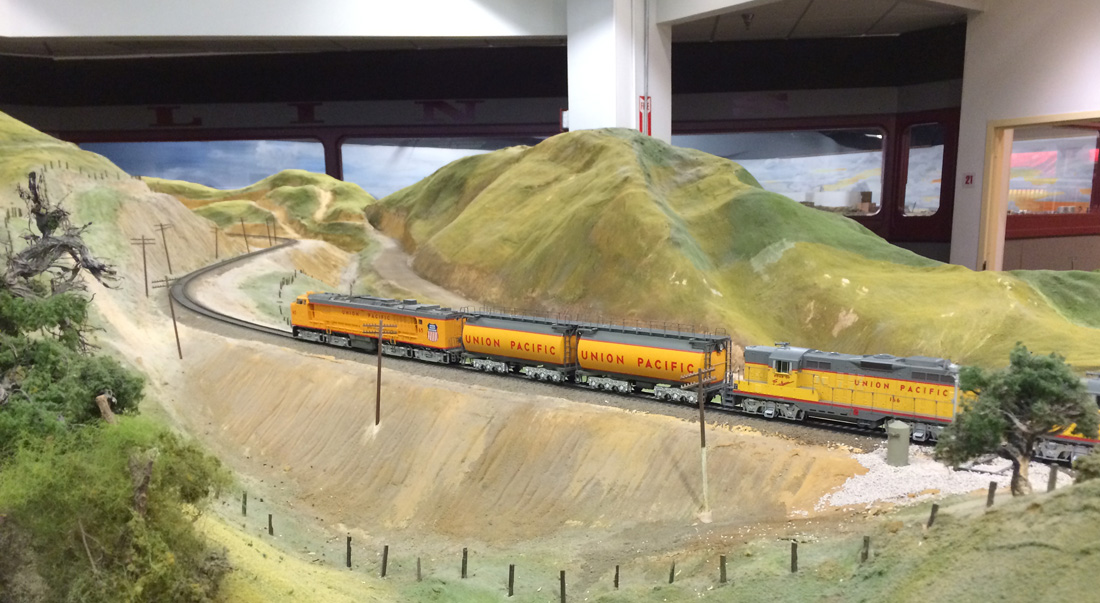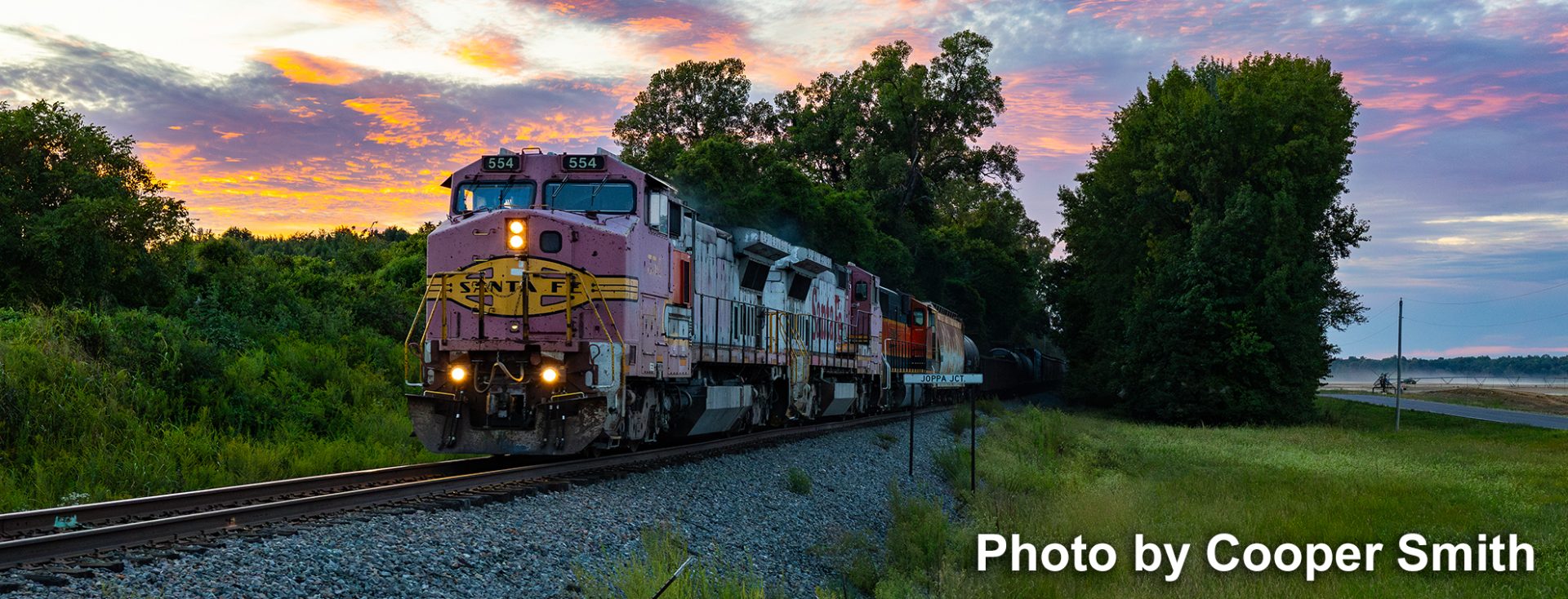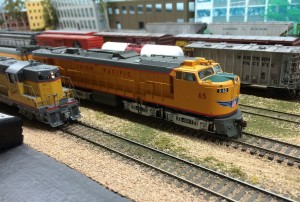
One of the things I’ve noticed in my duration in California is that the way housing is set up out here (no basements, very expensive and close together) is that most modelers come together and form a club and have a club layout. If anyone checked out the link I provided in the last newsletter for the California Southern Model Railroad, you can get an idea on what I mean. With multiple clubs in the greater Los Angeles area, there are plenty to visit and potentially get a chance to run your equipment on if you know the right person. I’m finding out that if you know the right person out here you can manage a lot of perks in this community.
Well, it wasn’t long after joining the Norwalk club that one of the members there, and co-worker, said that there was an extra spot to go run at the La Mesa club down in San Diego. I had head numerous people talk about La Mesa, but I really didn’t have a clue as to what it was that made as great as everyone made it sound. Well, curiosity got the better of me and I asked. The response wasn’t rude, just shocked; “You haven’t heard of La Mesa!?” No guys, I haven’t. Club layouts aren’t really a thing where I come from!
I was quickly informed that La Mesa is a huge layout located in the San Diego Model Railroad Museum. The layout represents the joint Southern Pacific/Santa Fe railroad from Bakersfield to Mojave, California of the 1950’s. And yes, it does contain the Tehachapi Loop.
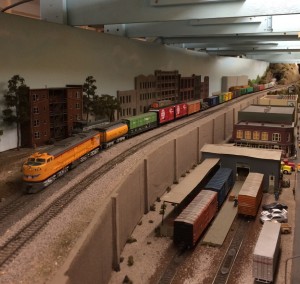
I now know why members of the Norwalk Club were always testing a train to head down to San Diego. The La Mesa layout is really one giant hill climb staring at Mojave. I now know why members are sticklers about having metal couplers on you freight cars, other than for looks. I now know why members are always checking and scrutinizing their equipment to make sure wheels are in gauge and couplers are all the same and correct height. I also know why members are making sure the electronics in their locomotives are in proper working order. This is a tough layout. If your equipment does not pass inspection of the operator in charge that day, you will not be allowed track time. Some of the members at La Mesa are also so into the prototype that if it was never seen on the line, they will not allow it on the layout!
After hearing about what was necessary to be considered to run at La Mesa, I actually had second thoughts about accepting the invite. Everything I have has plastic couplers, namely freight cars. And I also haven’t gone through the rigorous testing I felt necessary to run on their layout. After voicing my concerns, I was informed that getting an invite to run at La Mesa was actually not an everyday occurrence, and if turned down, it is even harder to get a second invite. So, I had to come up with a train to begin testing!
I had just gotten a DCC decoder and installed in one of my UP Veranda Turbines. I had been running this at Norwalk and was very, very pleased with its performance. So I figured what the heck. I’ll give it a shot. Unfortunately, if anyone else has one of these you will agree, the turbine does not pull anything close to what one would think these locomotives could pull. Part of the problem is that only 2 of the 4 trucks are used for traction. The other issue? Although the Turbine had a nice weight to it, it is the twin bolster truck design that does not allow great traction. So, sadly, this locomotive is light footed when it comes to NMRA standard weighted cars and hills.
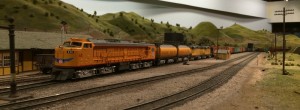
Another bit you may be wondering about is how I was able to run a turbine on the La Mesa layout if they don’t allow non-prototype equipment on the layout? Well, the good news is that the day I was running, the operator in charge was not a stickler. His train was 100% accurate to the layout, but he is a lot nicer to the invitees and what equipment they bring.
After finding 2 UP GP9s in the parts room at the office, I decided that would be my consist and I just won’t pull a very long train. After all, I was told that the passing sidings really only allow about 35 cars. So I began testing my consist at Norwalk with 40 cars. Even though the two GP9s are very light footed as well, they gave the Turbine the extra tractive effort needed to climb a 2% grade. Success!
Sunday, October 26th, the day I make it to San Diego. Most people would be sightseeing, eating at unique restaurants or just doing the all around “tourist” thing. Not me. I was at the San Diego Model Railroad Museum running trains. The co-worker I went with, Joe, started off by taking me around the whole layout. It’s big. Very big. Very impressive. And quite a bit of it is unfinished, which I was quite shocked at. I would have thought for a space in a Museum it would be a complete layout. But hey, this stuff takes time, especially if it’s all donated time. So I get it. The finished portions of the layout is mostly what is seen by the public, and the important parts are finished too; i.e. Tehachapi Loop.
The unfortunate part is that I didn’t take a whole lot of photos other than of my train. There is a lot going on while working this layout and you have to be alert. Most of it is single track, and if you haven’t checked for an opposing train, there is potential for a big problem. I was able to manage a few photos with my iPhone that turned out nice.
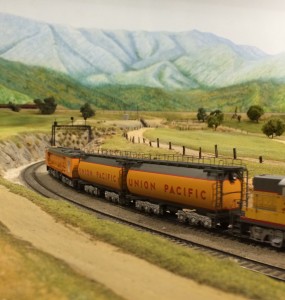
The museum is open on Sundays from 11-5, and in this time I only managed to get around the layout almost 2 complete times. Remember how I said it was big? Now, there was a lunch break in there which maybe would have gotten me around 2 complete times, but who’s counting?
All in all, I think it went very well. I had no major issues, although my Turbine and tender wheel sets are out of gauge for their hand laid track and I need to work on the speed matching a little more. But, having no issues and not causing any issues looks good to the person invited me, so I think I stand a chance of returning. And, should anyone come out for a visit, the layouts at this museum will definitely be worth a trip.

